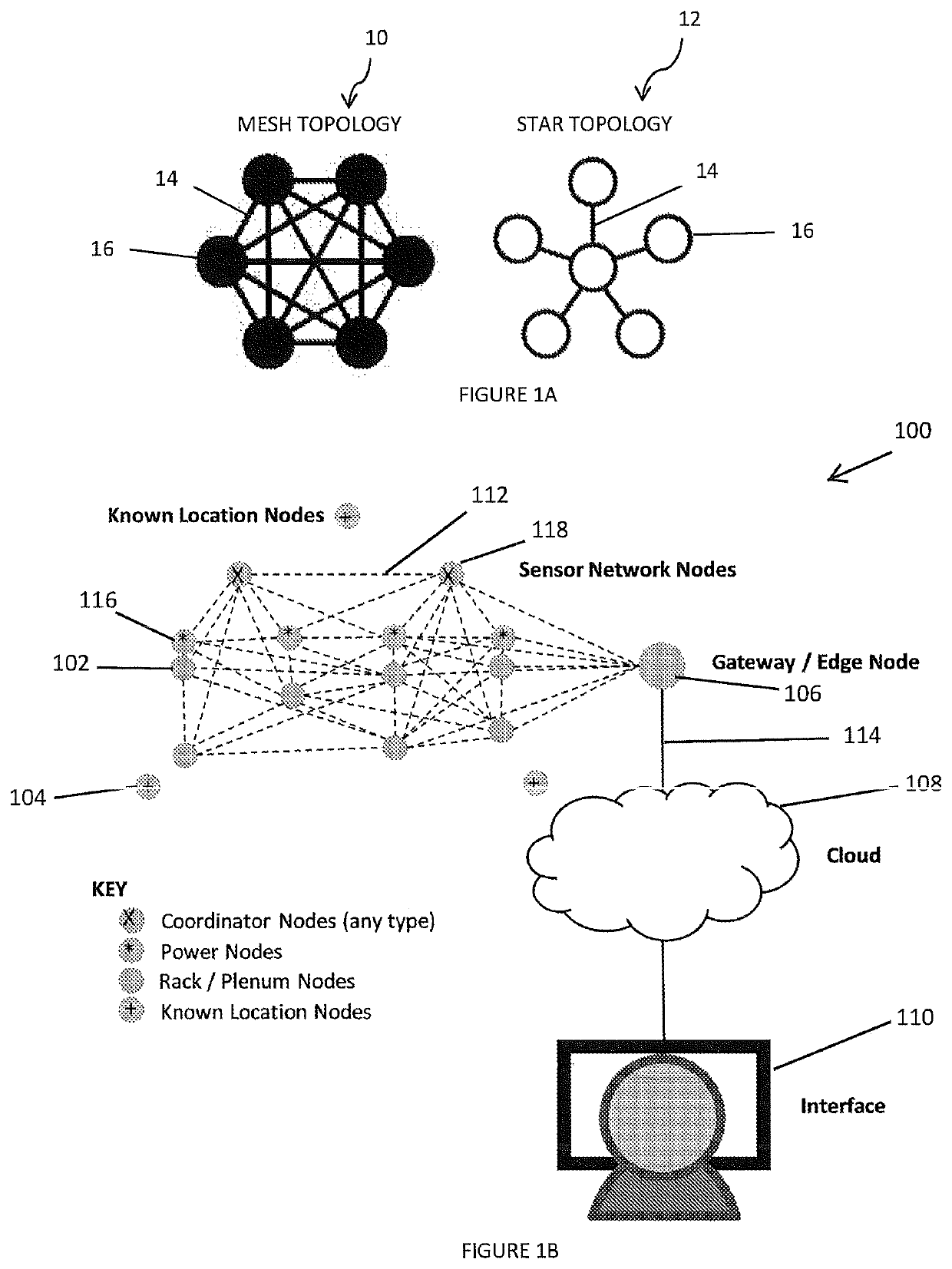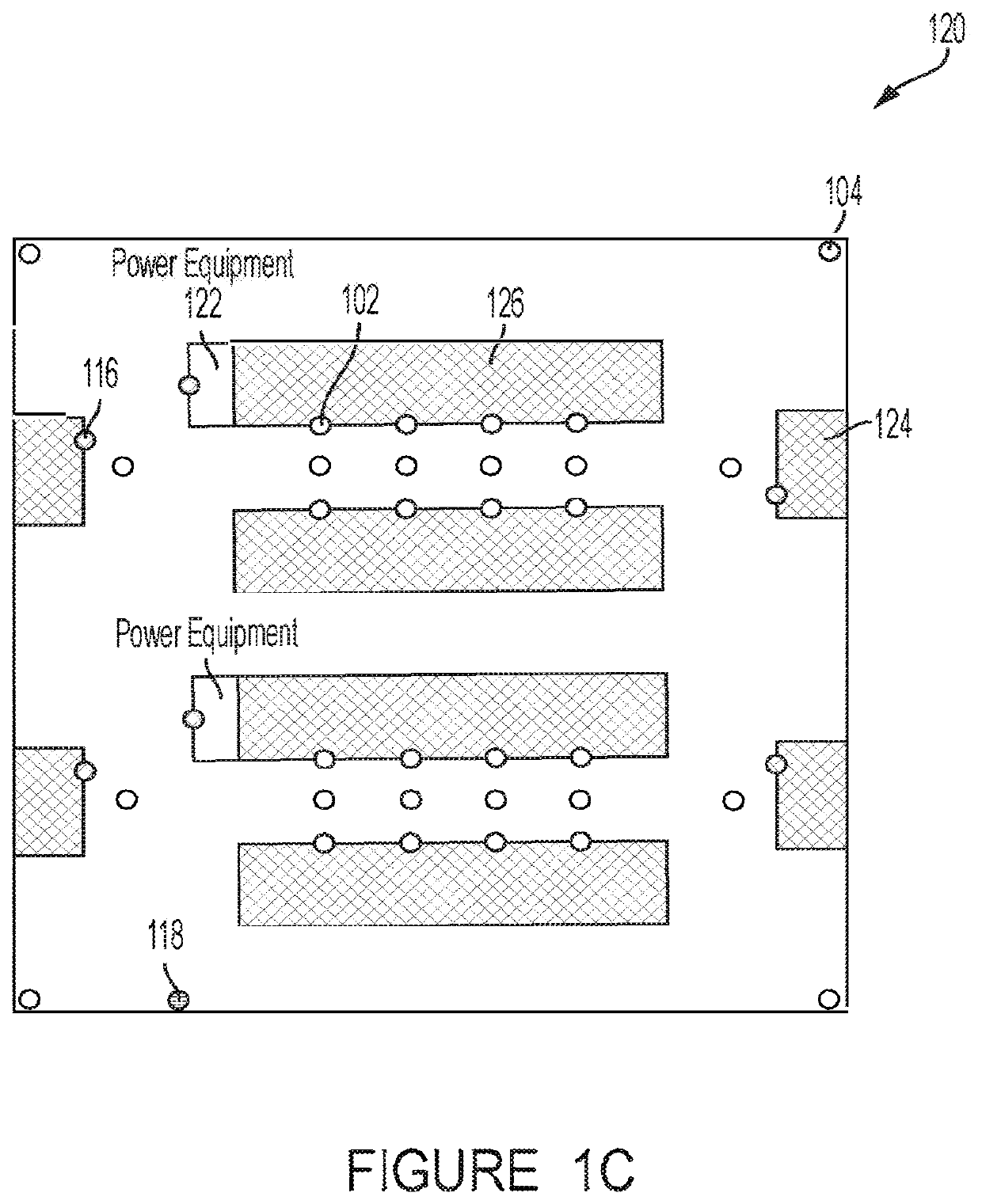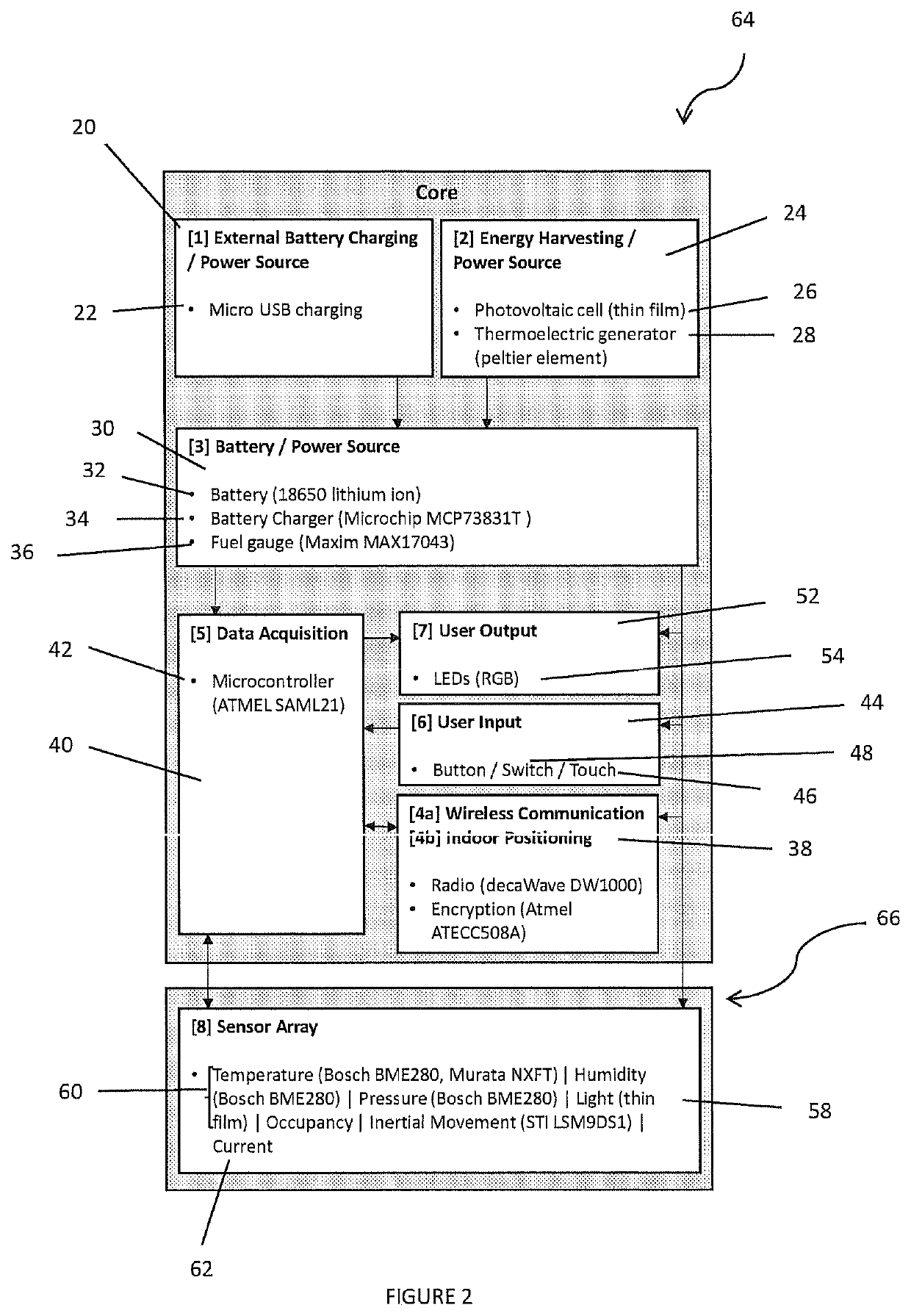Systems and methods for sensing, recording, analyzing and reporting environmental conditions in data centers and similar facilities
a data center and environmental monitoring technology, applied in the field of sensing, measuring, recording and reporting environmental parameters and conditions in facilities, can solve the problems of data center infrastructure being oversized at design, data center construction costing a lot to build, grow and maintain, and consuming a lot of electricity to run properly
- Summary
- Abstract
- Description
- Claims
- Application Information
AI Technical Summary
Benefits of technology
Problems solved by technology
Method used
Image
Examples
Embodiment Construction
[0058]The present disclosure pertains to systems and methods for obtaining environmental measurements (temperature, pressure, humidity, current, voltage, power, etc.) and associating them with sensor location or positional data and time data at a facility, such as a data center (“the environmental reporting system”). These devices are designed to operate as Internet of Things (IoT) devices that communicate over a customized low power mesh network. They are designed to solve two very complex problems simply: (1) environmental thermodynamic analysis and (2) sensor fleet management.
[0059]As described herein, the environmental reporting system provides for the sensing, analyzing and measuring of environmental parameters and conditions, which may include some or all of the following: temperature, air pressure, humidity, and power consumption, and others, at various locations and heights throughout the facility. By using the software associated with the system, the user can receive detail...
PUM
 Login to View More
Login to View More Abstract
Description
Claims
Application Information
 Login to View More
Login to View More - R&D
- Intellectual Property
- Life Sciences
- Materials
- Tech Scout
- Unparalleled Data Quality
- Higher Quality Content
- 60% Fewer Hallucinations
Browse by: Latest US Patents, China's latest patents, Technical Efficacy Thesaurus, Application Domain, Technology Topic, Popular Technical Reports.
© 2025 PatSnap. All rights reserved.Legal|Privacy policy|Modern Slavery Act Transparency Statement|Sitemap|About US| Contact US: help@patsnap.com



